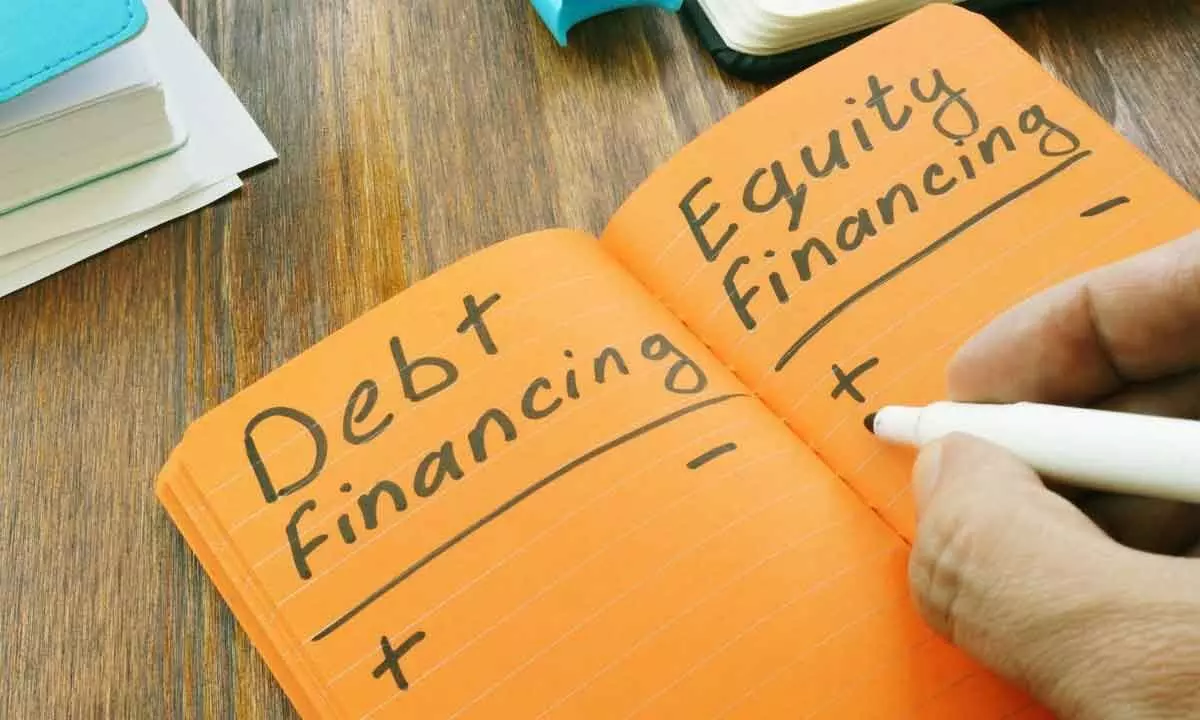Investors need to strike a balance on risk-return
Divided between debt and equity options, is the capital market one legal obligation and one ownership right
image for illustrative purpose

‘DEBT Aur EQUITY me Banta Hua, Hai Poonjee Bazaar
Ek Kaanooni Badhyata, Ek Maalikaana Adhikaar’
Translation: Divided between Debt and Equity, is the Capital Market
One legal Obligation, One ownership right
In the fascinating world of financial markets, two distinct paths beckon eager investors: debt and equity. Grasping the nuances that set these avenues apart is like holding the key to informed and confident investment decisions.
Debt Instruments
Imagine yourself stepping into the role of a financial creditor, a trusted depositor in the tapestry of economic transactions. Investing in debt instruments, like the reliable Fixed Deposits (FDs), bonds, or corporate papers and debt mutual fund, turns this imagination into reality. In this position, you wield legal rights that come to life in times of liquidation. Your rightful place at the forefront ensures you’re first in line to receive your dues, even before equity shareholders. This esteemed standing is a result of binding contracts and obligations entered into by the debtor. The stability these investments provide is similar to a steady heartbeat – fixed coupons or interest rates offer a rhythmic assurance.
But, as with any Bollywood movie, there’s a twist. The risk of reinvestment and the potential ripples of mark-to-market volatility, especially for those long-term debt papers, remind us that every scene has its nuances. Yet, there are actors that twirl out of this realm – those debt instruments that, like a well-kept secret, remain untouched by mark-to-market fluctuations when held till maturity. Taxes too, make their appearance on this financial stage. The weight of income tax, often relentless at one’s marginal rate, can chisel away returns, leaving them modest post-tax, sometimes even struggling against inflation. It’s a delicate balance, as even the contractual embrace of debt instruments doesn't entirely shield them from the shadows of default risk. But there’s a beacon of caution – credit ratings act as a guiding path, revealing potential pitfalls. The regulator has been very active for safeguarding investors, Listed bonds now need to compulsorily get a rating from a rating agency registered with SEBI and the FD’s in a bank is insured upto a maximum of 5,00,000 for both principal and interest amount held by them.
Equity Instruments
Now, picture yourself wearing the hat of an equity investor, a shareholder in the grand theatre of ownership. Equity instruments grant you a stake in the company’s destiny, where dividends are your applause, and the rise of share prices is your standing ovation. Yet, this stage is no straight path; it’s a like a game of snakes and ladders, marked by the thrilling unpredictability of volatility. Here, you’re not just a spectator but the ultimate beneficiary of a company’s unclaimed treasures. The dream of limitless returns makes a very attractive proposition, but it comes coupled with turbulent seas of volatility. The performance isn’t solely about the company’s artistry; it’s also linked with the broader direction of economic sentiment, global harmonies, and even the discordant notes of geo-political risk. The promise of great rewards is etched in equity’s script, yet it’s accompanied by the crescendo of risk. Over the years, the regulator Sebi has put in stringent rules and regulations for listed companies with regards to disclosures and accountability to safeguard the interests of investors.
Choosing the Right Instrument
As with choosing the right script for a hit movie, there’s no universal rule for the best choice. Each investor possesses a unique script, a personal song of goals, time horizons, risk appetite, and preference. Hence, the symphony of investment advice must harmonise all these diverse notes.
In this world of financial contemplation, the couplet serves as a poetic prism, refracting the essence of capital markets split between debt and equity. Debt investments paint stability with their contractual brushstrokes, offering fixed returns, while equity investments dangle ownership keys to the treasure troves of potential returns intertwined with volatility. As the financial landscape continues its evolution, these poetic insights stand as luminous beacons, guiding investors through the maze of investment choices.
(The writer is senior vice-president, SBI Funds Management Ltd)
(Translation &synopsis by Kunaal Khanna, V-P, SBI Funds Management Ltd)

